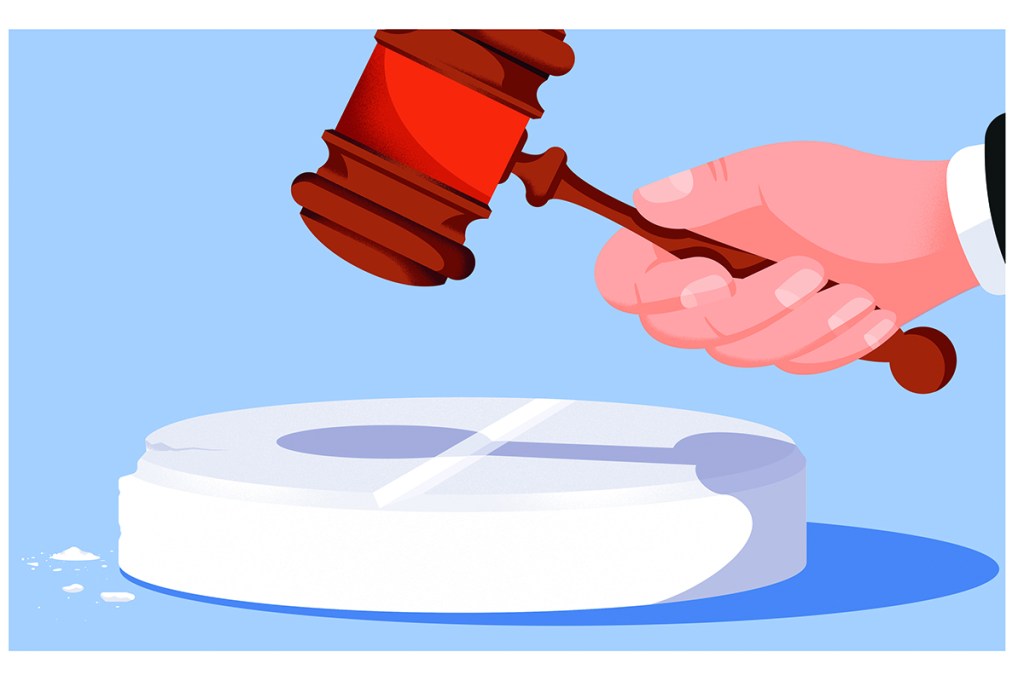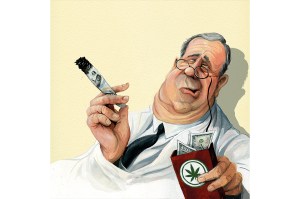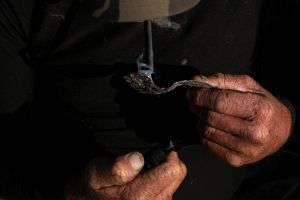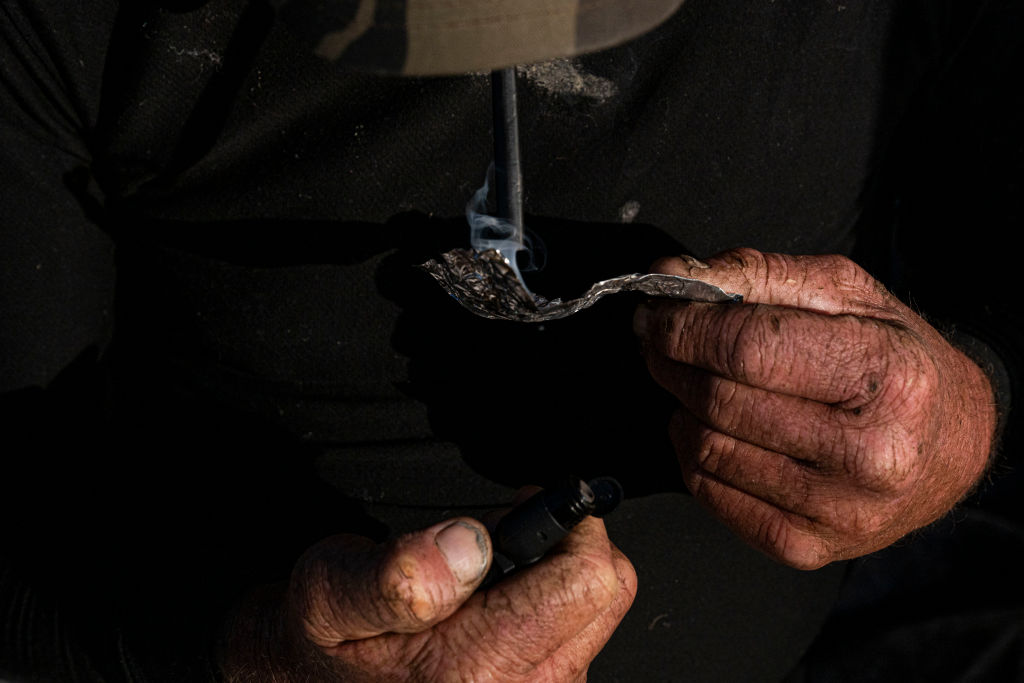More than two decades into America’s catastrophic opioid epidemic, the demographics of this unprecedented tragedy are clear. By far, the brunt of the harm has been borne by America’s poor and working classes.
Multiple studies show a strong correlation between lack of employment, economic distress and overdose fatalities. Indeed, a 2021 study by the National Academy of Sciences concluded most of the decline in life expectancy beginning in the mid-1990s among working-age men and women was attributable to drug poisonings of people with a high school education or less.
Standing in sharp relief to portraits of its primary victims are its perpetrators. Those most responsible for this epidemic are part of America’s best educated and economically privileged classes. This was an epidemic caused in large measure by scientists, physicians, drug distributors, pharmaceutical company executives and regulators.
They reaped enormous economic benefits but, even after a deluge of lawsuits, they paid little for the havoc they wreaked.
There would have been no spike in drug overdoses had handsomely compensated executives at a handful of global pharmaceutical companies not decided in the mid-1990s to flood America with prescription opioids. Nor would there have been an epidemic if the US Food and Drug Administration, among the most elite healthcare regulators in the world, had not given their approval to a half dozen or more prescription opioids that fueled addiction in the United States.
Physicians, most of them well-meaning, played a role as well. In the mid-1990s and early 2000s, physicians prescribed opioid pain medications to millions of patients for relatively benign ailments that would have been treated in the past with non-addictive pain relievers like ibuprofen. At the same time, a small subset of unscrupulous physicians established so-called pill mills, doling out prescription opioids for cash, no questions asked.
As US District Court Judge Dan Polster, who is overseeing thousands of lawsuits by local and state governments against drug companies, distributors and drug store chains observed early in the case, the opioid crisis is a “man-made plague.”
How did it happen that some of America’s most privileged and economically advantaged citizens unleashed a healthcare fiasco that claimed as victims some of society’s most powerless?
Part of the reason is structural. Decisions made by elites often have impacts on far larger groups, and when things go poorly, it is the economically advantaged who are best able to protect themselves. There’s more to the story with the opioid epidemic though. From the start, this was a healthcare policy where the economic incentives were powerfully misaligned. It was sure to generate windfall profits for drug companies, distributors and other healthcare providers while exposing patients to unprecedented risks. But the repercussions of this pharmaceutical gold rush were easily foreseeable.
Consider, for example, Johnson & Johnson. In the mid-1990s, the company developed a new, more potent strain of poppy, the so-called Norman poppy, and quadrupled its Tasmanian acreage. J&J would go on to supply more than 50 percent of the raw product used in the production of prescription opioids from the early 2000s until it left the business in 2016. J&J also had its own prescription opioid, Duragesic, a widely abused fentanyl patch linked with addiction and overdose deaths that the company finally discontinued last year, long after it had become popular with addicts.
The outcome of this business initiative was catastrophic for many Americans but not so bad for J&J executives, none of whom have ever been called to account for the horrors they initiated. Quite the contrary. Former CEO William Weldon, who was head of the company for much of the time J&J was cashing in on the opioid frenzy, left the company in 2012 with a reported $143 million retirement package.
Other players were equally egregious and yet seemed to have escaped accountability apart from being embroiled in civil lawsuits involving multibillion-dollar awards and settlements that, as a practical matter, amount to little more than the cost of doing business.
Consultant McKinsey and Co. reaped, according to documents obtained by Massachusetts attorney general Maura Healey in the state’s litigation against Purdue Pharma, $110 million in fees from Purdue Pharma and other opioid makers for advice on how to ramp up sales, even as overdoses were mounting. McKinsey was uniquely enterprising, playing both sides of the fence. Not only did it advise Purdue, J&J, Mallinckrodt and other corporate opioid miscreants on how to ramp up sales, the company also consulted with local governments and nonprofits on ways to combat the opioid epidemic.
When, in the face of mounting addiction and overdose deaths, regulators and healthcare providers began to tighten prescription rules in the mid-2000s, McKinsey advised Purdue Pharma to focus its sales staff on the most potent OxyContin extended-release pills. The idea was that selling the higher strength tablets would offset declining revenues caused by the tightened prescription rules — a 100-tablet bottle of 80 milligram OxyContin retailed for $1,500 as against $269 for the 10mg version.
Purdue urged physicians to keep patients on higher strength opioids for longer periods. The problem was that those patients faced as much as a fifty-fold greater risk of death, according to Healey’s lawsuit. If distributors and pharmacies had to deal with the fallout from overdose deaths, no problem. In a thoughtful and gracious touch, McKinsey advised Purdue to pay rebates to distributors to offset the inconvenience that might arise when a user overdosed.
In effect, Purdue and other drugmakers created a vast market of addicted customers who had no choice but to consume their products in a perverse cycle of self-destruction.
Though not alone, Purdue was a central player in the onset of the epidemic. It devised the hard sell that persuaded thousands of physicians to prescribe opioids for chronic conditions that caused the company’s profits — and addiction rates — to soar. So did the fortunes of the Sackler family, owners of the company, whose net worth was $13 billion at the peak of OxyContin sales. Over the years, the Sacklers poured hundreds of millions into the Tate Modern in London, the Metropolitan Museum of Art in New York and other cultural institutions and universities which turned a blind eye as evidence mounted the company was poisoning a broad swath of the population.
And there was evidence aplenty.
Purdue and three of its top executives pleaded guilty in 2007 to federal charges of fraudulently marketing OxyContin to physicians as less likely than similar drugs to cause addiction and paid an eye-popping fine of $600 million.
Yet it took the Met, the Tate and other cultural institutions until 2019 to announce that they would no longer accept money from the Sacklers. By that time the taint of Sackler money had become too much — even in the nonprofit world, where a profound lack of curiosity about sources of donor money is common.
As for the Sacklers associated with the OxyContin disaster, they’re going to be just fine. They are expected soon to exit bankruptcy proceedings with a remaining family fortune of about $6 billion.
Even regulators got in on the game. Dr. Curtis Wright, the FDA medical review officer who oversaw Purdue Pharma’s OxyContin application, left the FDA to join Purdue at a salary of $379,000 a year after OxyContin won approval in late 1995, more than four times his FDA compensation. Wright’s role in the onset of the epidemic is noteworthy.
According to a Justice Department memo prepared in advance of Purdue’s 2007 indictment, Wright “solicited Purdue’s help” in writing his evaluations of the company’s application to market the drug. Then he signed off on language proposed by Purdue suggesting OxyContin, because of its extended-release formulation, posed less addiction risk than other prescription opioids.
That language, according to an internal Purdue email, was “so valuable and promotional that it easily served as a principal selling tool.”
Yet it turns out the FDA never had reliable scientific evidence supporting the claim that it posed less of an addiction risk or that it was a safe and effective chronic pain treatment. Before the drug was approved by the FDA, Purdue had conducted only one adequate and well-controlled clinical trial. It lasted two weeks. This for a drug that physicians would soon be prescribing to patients for months or years.
The FDA, for its part, has never provided anything remotely resembling an explanation for how this policy fiasco came about and why everything went terribly wrong. When Democratic senators Maggie Hassan and Ed Markey demanded in 2020 that the agency give an accounting of its role, their reply came from Janet Woodcock, who had been head of the FDA unit that approved OxyContin and half a dozen other prescription opioids. Far from clarifying matters, Woodcock’s response was a masterpiece of bureaucratic evasion.
In her twenty-three-page letter to Hassan, Woodcock acknowledged the agency might have responded more quickly and forcefully to early signs the epidemic was spiraling out of control. But not once did she acknowledge that FDA approval of OxyContin for longterm pain treatment was a decisive factor causing the crisis. Instead, she emphasized that the FDA scrupulously followed rules governing the approval process.
By the time the FDA gave its approval there were ample scientific studies, in addition to more than 100 years of clinical experience, showing that the risk of addiction from long-term use of opioids could be as high as 40 percent. Why was all this data so roundly ignored?
Drug companies and distributors were enraptured by the unprecedented spike in profits, tens of billions in free cashflow. Many well-meaning physicians were gulled by pharmaceutical industry claims, based on a handful of later discredited reports, that the risk of OxyContin was much lower and persuaded that there was an epidemic of untreated pain in the United States. Key members of Congress, under heavy pressure from drugmakers and distributors, which spent millions in campaign contributions, undermined efforts by the Justice Department and the Drug Enforcement Agency to mount a crackdown.
Millions of Americans are still suffering. And while lawsuits may have ended in expensive sounding settlements and the Sackler name has been removed from gallery walls, the perpetrators of the opioid crisis haven’t come close to paying an appropriate price for their actions.
This article was originally published in The Spectator’s November 2022 World edition.

























